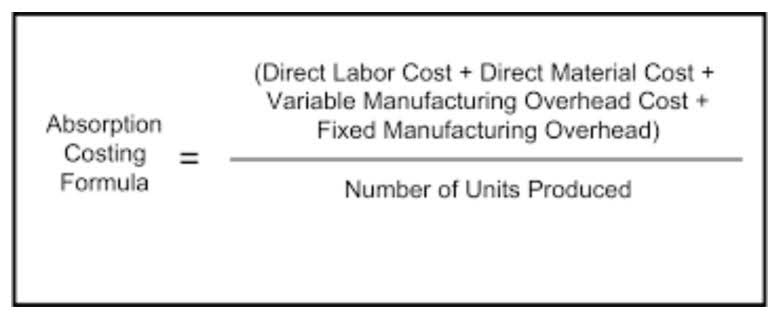
Known as obsolete inventory, holding on to purchased inventory that is no longer sellable can significantly harm your bottom line. Even obsolete products might have niche markets or can be donated to charity. Once you’ve identified obsolete stock in your warehouse, the next critical step is handling and disposing of it responsibly. The goal is to reduce waste, recover as much value as possible, and comply with environmental and legal regulations. Did you know that holding onto outdated inventory can cost you more than just space? But with a systematic approach, you can pinpoint the problem before it gets out of hand.
- By embracing demand forecasting techniques, businesses can make well-informed decisions on how much inventory to keep on hand.
- The software produces reports, insights, and advanced analytics you’ll find invaluable when making decisions about buying new inventory.
- In this article, we have explained obsolete inventory, how obsolete inventory works, inventory analysis, causes of obsolete inventory, how to avoid and reduce obsolete inventory, and more.
- But surprisingly, underestimating demand can also increase the risk of obsolescence.
- The longer a company holds on to obsolete stock , the higher the lost cost will be.
- Once a certain scale is achieved, businesses need to have robust tools to handle all the information needed to make proper decisions.
Disclosure in Financial Statements

By analyzing historical sales patterns, companies can identify trends and predict future demand more accurately. This data-driven insight allows businesses to adjust their inventory levels in real-time, reducing the risk of overstocking items that are likely to become obsolete. Advanced software solutions like SAP Integrated Business Planning or Oracle Inventory Management Cloud can facilitate this process by providing real-time analytics and forecasting capabilities. Accounting for obsolete inventory involves specific methodologies to ensure that financial statements accurately reflect the true value of a company’s assets.
Donating Excess Stock
Real-time real estate cash flow access to data across the supply chain is beneficial for real-time inventory management. This gives you the most current information about inventory levels along with other details, such as warehouse receiving and production time lines. Businesses can implement progressive discounting strategies, starting with moderate markdowns and gradually increasing them until items move.
How TranZact Can Help You Optimize Minimum Stock Levels and Reduce Costs

TranZact is a tech-enabled platform that offers sales, purchases, and inventory management solutions. Companies can easily manage their inventory and production with this high-end software and tool. Moreover, it also provides a comprehensive overview of the inventory status with smart dashboards. Yet another effective way to identify obsolete inventory is by setting up the aging threshold for a particular product. Led by Mohammad Ali (15+ years in inventory management software), the Cash Flow Inventory Content Team empowers SMBs with clear financial strategies. We translate complex financial concepts into clear, actionable strategies through a rigorous editorial process.
New product launches

It’s about seeing beyond initial obsolescence, recognising the untapped potential of every item in stock. Regular audits supplement these efforts, ensuring real-time corrective measures are taken before surplus stock turns into https://blearning.my.id/bond-amortization-schedule-effective-interest/ a financial burden. This inefficiency diverts focus from processing sellable goods and can slow down order fulfilment rates, directly affecting customer satisfaction. By performing regular audits, you can quickly remove inventory that is unsellable or unlikely to sell. There’s also the option of remarketing items that are at risk of becoming obsolete. As such, they might predict a much higher demand and end up ordering an excess amount of inventory.
Inventory Write-Downs
Implementing regular inventory analysis and audits is crucial for maintaining optimal stock levels. Periodic checks on your inventory can help identify slow-moving or excess items, enabling you to take timely action to prevent obsolescence. By closely monitoring stock levels, businesses can identify patterns and trends that may contribute to inventory buildup, leading to more strategic inventory management decisions. Additionally, regular analysis can help improve inventory turnover ratios and ensure that you’re meeting customer demand without overstocking products. Managing obsolete inventory is critical for the financial and operational health of a company. It can have a large financial impact on companies as obsolete inventory represents capital that is tied up and not generating any revenue.
These items remain in storage for an extended period without being purchased. Obsolete inventory poses a significant challenge for businesses, affecting both operational efficiency and financial health. As products become outdated or demand shifts, companies often find themselves with stock that no longer holds value. This issue is not just about storage space; it has far-reaching implications on cash flow, profitability, and resource allocation. Toyota’s renowned Just-in-Time (JIT) production system has been instrumental in reducing the risk of obsolete inventory. By closely coordinating with suppliers and maintaining lean inventory levels, Toyota can quickly adapt to changes in demand and minimize the accumulation of excess or obsolete stock.

Inaccurate Lead Times
- It involves peeling back the layers of operational missteps, from poor demand prediction to outdated management systems, which can constrict a company’s cash flow and clutter warehouses with unwanted goods.
- In corporate finance and accounting, sunk costs are costs that have already been incurred and cannot be completely recovered, regardless of the decision made.
- But to move the product faster and get more cash for it, the company decided to bundle the product with two best-selling wines, a red and a white.
- As in the case of obsolete inventory, you can try to sell obsolete equipment or give it away.
- The above example demonstrates how the provision for obsolete inventory account is used to maintain accurate financial statements by recognizing and accounting for losses due to obsolete inventory.
- One of the most common reasons for inventory becoming obsolete is shifting customer preferences.
- Obsolete inventory, also known as dead or excess inventory, refers to stock that has outlived its usefulness or has become unsalable due to changes in market conditions or product life cycles.
The company that manufactured these parts will have to write them off, as they are no longer of any use. When the government changes regulations, it is vital to adapt quickly and modify your products to meet the new standards. Compliance is essential, and ignoring new laws could cost your company dearly.
- From an accounting perspective, excess inventory maintains its carrying value while obsolete inventory requires write-downs to reflect its reduced market value.
- Together, we can create a more responsible and innovative approach to managing your branded merchandise.
- Digitizing the audit process will automatically create a digital trail of your operations transaction history with less human error.
- In the next sections, we will further discuss the importance of obsolete inventory for investors and provide real-life examples to better understand its implications.
- In an ideal situation, you would want to sell every last bit of inventory or have sufficient stock during high demand, but that is hardly ever the case.
- These consist mostly of warehousing expenses like rent (or depreciation if we use our premises) and include other relevant costs like equipment depreciation, salaries, and utilities.
Therefore, it is important to carefully evaluate the viability of discounting before implementing this strategy. Businesses should consider factors such as the product’s demand, market conditions, and profit margins when determining the appropriate level of discounting for obsolete inventory. By offering products at a lower price, businesses can entice customers to purchase them, even if they are not the latest or most popular items. For example, a clothing retailer with excess inventory of a particular style of shirt could bundle it with other popular items, such as what to do with obsolete inventory pants or shoes, to create a new outfit. Alternatively, a business with excess inventory of a particular type of electronic accessory could bundle it with a popular gadget to create a new product bundle.